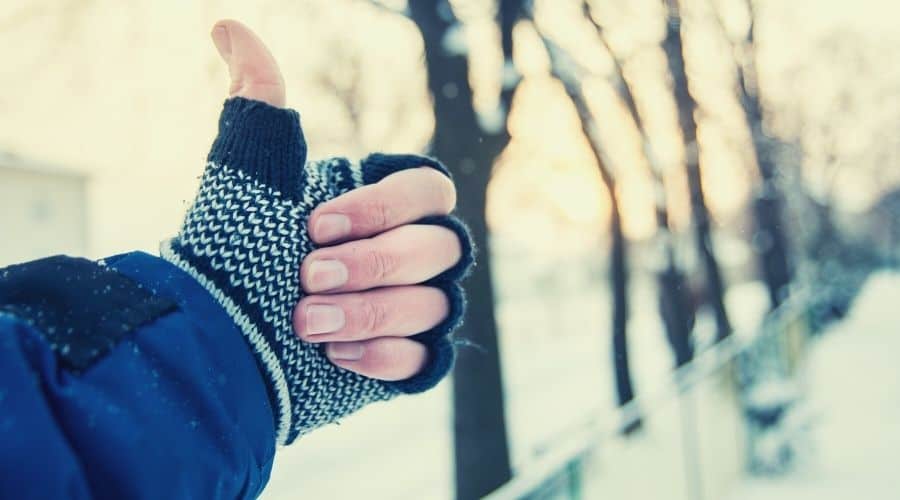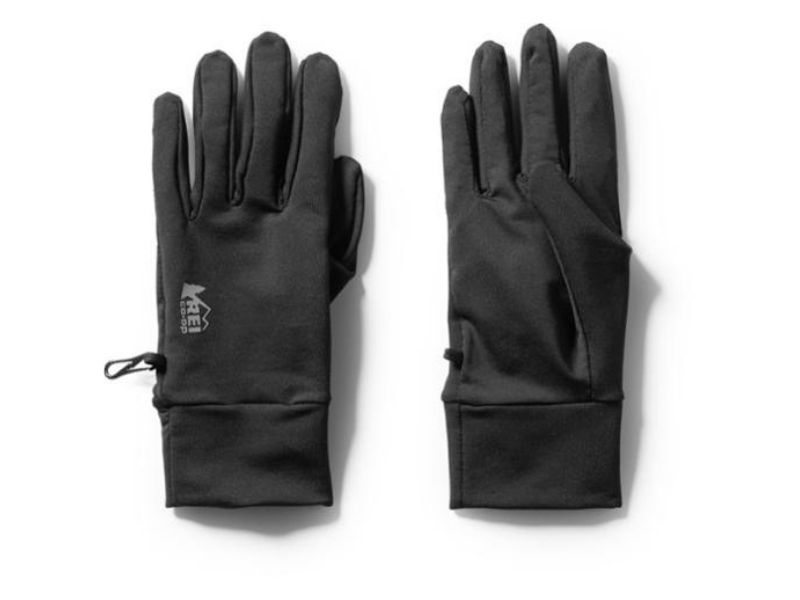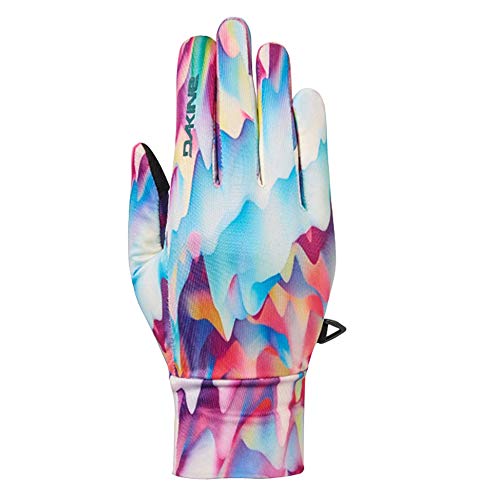While many invest in winter gloves, glove liners are often overlooked. If you struggle with cold hands, a high-quality liner can make all the difference. Liners offer an extra layer of insulation, allow you to keep your hands warm when removing outer shell gloves for increased movement, and, depending on their material, can also act as a moisture management system.
To help you find the right ones, we’ve compiled a list of the best glove liners for skiing, hiking, backpacking, or camping. Our top overall choice is the Icebreaker Oasis Merino, with the Terramar Thermasilk, Smartwool Merino 150, REI Glove Liner, MERIWOOL Merino Wool Liners, Dakine Rambler, and the Outdoor Research Woolly Sensor Liners also highly recommended.
We’ve included buying advice to help you choose between the top models including considering key features such as material type, fit, breathability & wicking, water resistance, insulation, battery-powered heating, touch screen compatibility, and versatility. We also discuss the benefits of adding glove liners to your kit and guide you on choosing liners suitable for individuals with eczema.
Table of Contents
What Are The Best Glove Liners For Cold Weather?
The following list contains our top recommendations for cold-weather glove liners, with the Icebreaker Oasis Merino coming out on top.
- Icebreaker Oasis Merino Glove Liners
- Terramar Thermasilk
- Smartwool Merino 150 Glove
- REI Glove Liner
- MERIWOOL Merino Wool Glove Liners
- Dakine Rambler
- Outdoor Research Woolly Sensor Liners
Icebreaker Oasis Merino Glove Liners
Editor’s ChoiceThe Icebreaker Oasis Merino Glove Liners won our vote as the best in the business. They’re high-wicking, lightweight and breathable, and the warmest glove liners we’ve ever had the pleasure of pulling over our paws.
Made from 200gm merino wool they have a natural moisture-wicking capability as well as being odor-resistant. They have Lycra enhancements making them a more comfortable fit and decreasing drying time. And even though they’re made with wool, they’re safe to wash in a machine on a cold and gentle cycle. Thermal protection is integrated into the design with an extended and fitted cuff that keeps cold air from reaching under your outer layer. The company also has a precise sizing guide to find your best fit.
As a liner, many previous customers rated them as warmer than a typical liner. The seams have been a source of complaint from some people as they are somewhat uncomfortable or cause bunching.
PROs
- Lycra enhancements
- Machine-washable
- Warmer than similar products
CONs
- Pricey
- Not touchscreen compatible
Terramar Thermasilk
Best Silk GlovesThe Terramar Thermasilk, made from 100% silk, is thin and easy to slide under your glove and is our top choice for silk glove liners. Silk makes them moisture-wicking, breathable, and a perfect fit under top-layer gloves of all kinds.
The Thermasilk glove liner is highly unlikely to keep your hands warm as a standalone glove, but they are useful as a base layer and a great option for buyers who aren’t too keen on the cost of Merino.
They have pull-on closures and can be washed in a machine for an easy clean. This glove liner also comes in four sizes and two colors.
PROs
- Thin material
- Pull-on closures stop cold air
- Machine-washable
CONs
- Silk is not as warm as wool
- Not at all rugged
Smartwool Merino 150 Glove
Best Wool GlovesThe Merino 150 from Smartwool are the best wool glove liners on our list.
The Merino 150 use a lightweight knit pattern that makes them super cozy. They are 46% merino, 46% acrylic, and 8% elastane. This blend prevents them from being so itchy for those with wool allergies.
They also have an extended ribbed cuff so that they will slide under your bulkier gloves but extend beyond their end, and have knitted-in finger pads for touchscreen compatibility.
These gloves come in four sizes and two different colors. Unfortunately, no sizing guide is provided to aid buyers, but we recommend going a size down when buying because they run a little large.
PROs
- A mix of materials decreases sensitivity
- Knit-in touchscreen compatibility
- Extended ribbed cuff
CONs
- No sizing chart
- Expensive for mixed materials
REI Glove Liner
Best Budget GloveThe REI glove liner is a budget-friendly option rated to function well as standalone gloves in cool weather and as a liner during temperatures under 40°F. Made with soft, stretchy twill fabric (64% Nylon, 22% polyester, 14% spandex, the liner is thin and slides easily under thicker gloves.
If you intend to use them for rugged activities like hiking or skiing, they function well due to minimal seaming. It keeps them from bunching and reduces itchy pressure points. Both the palm and fingers have a specific design for touchscreen compatibility.
These liners also have integrated tabs that allow you to pull them on and off easily. Because they are unisex, some women will find they run large.
PROs
- Stretch fabric enables mobility
- Minimal seams
- Touchscreen compatible
CONs
- Not the most breathable
- Run large for many women
MERIWOOL Merino Wool Glove Liners
Best Low-Cost Merino GloveThe MERIWOOL Merino glove liners are a great low-cost Merino option constructed with 65% 340g/m2 merino wool, 28% nylon for durability, and 7% elastic for enhanced mobility.
Nevertheless, they are a useful extra layer that offers insulation, plenty of stretch, and above-average breathability. They are also machine-washable and have finger surfaces that allow for touchscreen use.
Meriwool offers the best customer care of all the glove-makers in our review, offering 90-day returns with proof of purchase. If unhappy, you’ll receive a refund or can get a replacement glove if desired. They also come with a 1-year warranty.
Unfortunately, the seams are again a downside for these gloves, causing the fingers to twist around a little, particularly when using trekking poles.
PROs
- Elastic allows them to stretch
- Touchscreen compatible
- Best customer care policy
CONs
- Slightly irritating seams
- Fingers are often too long
Dakine Rambler
Best Glove for WomenThe Dakine Rambler ski glove liner is designed specifically for women, but buying a larger size can work for men as well.
They’re made with a 220g blend of stretchy, moisture-wicking polyester, nylon, and elastane. There are four sizes and various patterns on offer.
Durability is the number one priority for these gloves. Unfortunately, this seems to have taken the focus off keeping your hands warm, because the Dakine fall far short of their competitors as regards insulation. However, these still rank on the list for their durability and are ideal for three-season hiking and backpacking.
PROs
- Environmentally friendly
- Durable
- Four sizes and patterns
CONs
- Not very insulating
- Made specifically for women
Outdoor Research Woolly Sensor Liners
Best Ski Glove LinersThe Outdoor Research Wooly Sensor Liners are toasty warm, touchscreen-compatible, and breathable, ideal for wearing under ski gloves in wintry weather.
The Woolly Sensor are made with 100% merino wool, making them soft to the touch, quick-drying, highly breathable, and super cozy. They have a pull-on closure tab to seal the cold weather outside and, despite their light weight, are surprisingly warm.
The Sensor are also versatile, being warm enough to be worn as a standalone glove in fall or spring and among the best out there for wearing under a mitt on freezing winter adventures.
PROs
- Quick-drying
- The pull-on closure tab seals them
- Fabric is moisture-wicking
CONs
- Have to be hand-washed
- Quite pricey
Why Pack a Pair of Thin Glove Liners?
Packing thin glove liners serves various purposes beyond additional warmth. Evidently, adding another layer increases insulation and helps keep your hands warm. But liners also offer hand protection when taking off outer shell gloves when enhanced dexterity is needed as well as helping to wick sweat away from the skin.
Using a liner under a ski mitt or any other kind of glove will allow you more agility when you take off the beefier “shell” ski or hiking gloves. If you can’t use your winter gloves for something requiring minute movements, having these allows you to keep your hands warm and gain mobility. It can help you if you want to take a photo, take a leak, pitch a tent, or tie a knot.
What’s more, if you lose your top-layer winter gloves, then your glove liners can act as a temporary replacement.
Certain types, especially ski glove liners, will increase water resistance around your hands. Depending on what material they are made from, they also provide you with an enhanced moisture-management system. This is especially helpful in freezing weather since saturated fabrics will end up drawing heat away from your skin.
Now we have you convinced that these should be something you always wear along with your gloves for winter, take a look through the buying advice below to help you pick the perfect pair for you.

What Features Do The Best Winter Glove Liners Have?
The essential aspects to consider when choosing the best glove liner base layer for your hands are listed below.
- Material
- Fit
- Breathability & Wicking
- Water Resistance
- Insulation
- Battery-Powered Heating
- Touchscreen Compatibility
- Versatility
Material
Glove liners are typically made from Merino wool, silk, or synthetic materials, as explained below. One option to always avoid is cotton. Cotton is breathable but lacks moisture-wicking and water-resistant properties and doesn’t insulate when damp. Instead, it actively draws heat away from your hands, making it unsuitable for outdoor use.
Merino Wool
A Merino wool liner is one of the best options available, provided you aren’t sensitive to wool. It is highly breathable, moisture-wicking, and the natural fibers in Merino wool are also odor-resistant.
You don’t have to worry about your hands getting cold either, since it is warm without being heavy, meaning a high warmth-to-weight ratio.
All of this comes at a price, though, and it’s generally a pretty steep one.
Silk
Silk isn’t typically considered a fabric for outdoor activities since it isn’t durable. However, if protected under your top glove, silk liners should hold up well enough.
Pure silk glove liners are typically pricey. It’s best to find a mixture of silk with another material for your liner. The positive aspects of silk include its breathability, with its uber-skinny threads making for very thin glove liners. On the other hand (pun intended), it also means they are not one of the warmest glove liners out there.
Synthetic
Products made from synthetic materials are often nearly as good as merino wool and silk but with a lower price tag. The two most common synthetic choices are polyester and nylon.
Polyester is very breathable, moisture-wicking, and durable. It functions similarly to merino wool without causing as much itchiness.
Nylon offers comparable durability to polyester and has good moisture-wicking capabilities. It isn’t, however, quite as breathable.
The only significant downside to liner gloves made from synthetics is that they are not as cozy as natural fibers.

Fit
Trying on glove liners is the best way to test for fit. Note how it fits across the back and palm of your hand. It shouldn’t stretch tightly over the palm, or it will restrict movement. Across the back and at the cuff, it should be fitted tightly enough to avoid letting cold air in but not so tight that it restricts circulation.
Breathability & Wicking
Liner gloves need to be breathable and moisture-wicking. Sweaty hands are sure to become cold if you have to stop moving or the temperature drops. Merino wool and polyester are the most breathable and moisture-wicking fabrics used for glove liners.
Water Resistance
A liner glove that can wick away moisture yet isn’t water-resistant may not be useful to keep your hands dry in cold weather. Some synthetic fabrics are water-resistant or you can opt for a liner made with a PU-coating or that uses a DWR coating.
Warmth
If you’re wearing liner gloves in cold weather, warmth is a primary concern. Insulation depends on thickness and material type, with a fleece lining or wool being the best insulator options. Thickness is not always specified but can typically be determined by the liner’s weight.
If you really need to increase the heat on your hands, you might want to consider battery-powered heating. It can be expensive, and the jury’s still out on its effectiveness. However, if you have Raynaud’s syndrome or are hiking in extremely frigid temperatures, a pair of battery headed liners may be worth investing in.

Touchscreen Compatibility
Despite enhancing dexterity without sacrificing warmth, the best glove liners may lack touchscreen compatibility for phone or tablet use. To combat this some products feature touchscreen tabs resembling leather or rubberized pads in the fingertips. Others have ‘hooded’ tips that can be pulled back for easy access to your fingertips.
Versatility
Some liners are versatile enough to be worn alone in warmer conditions and as a liner glove for winter. These gloves are typically slightly chunkier, feature padded palms, and in many cases made with softshell materials or have a water-resistant coating.
What Liner Gloves To Choose For Eczema?
If you have eczema, choosing the right glove liner material is crucial to minimize irritation and provide comfort. Suitable options include Merino wool, silk, and certain synthetic moisture-wicking fabrics.
Merino wool, with its soft and fine fibers, is often considered a suitable option for individuals with eczema. However, reactions can vary, and some people with eczema may find certain types of wool irritating.
Silk is a good option since it’s a natural, smooth, and hypoallergenic material that is gentle on sensitive skin. However, some individuals may be allergic to silk itself.
Some synthetic moisture-wicking fabrics, including polyester blends, can be a suitable option. However, exercise caution with synthetic materials, as some individuals may be sensitive to specific synthetic fibers.
If you have eczema, patch-test a small area of your skin before wearing any fabric extensively. Additionally, consulting with a dermatologist or healthcare professional can provide personalized advice based on your specific skin condition and sensitivities.








